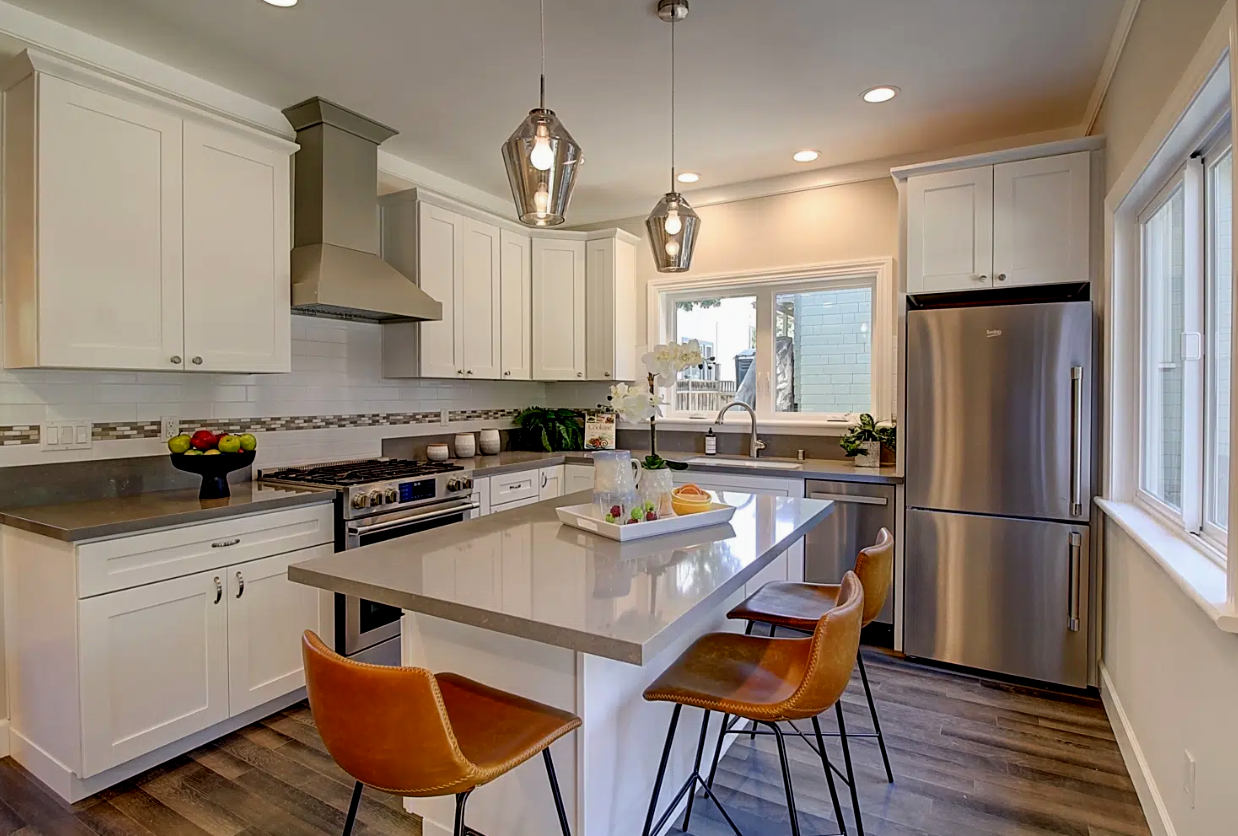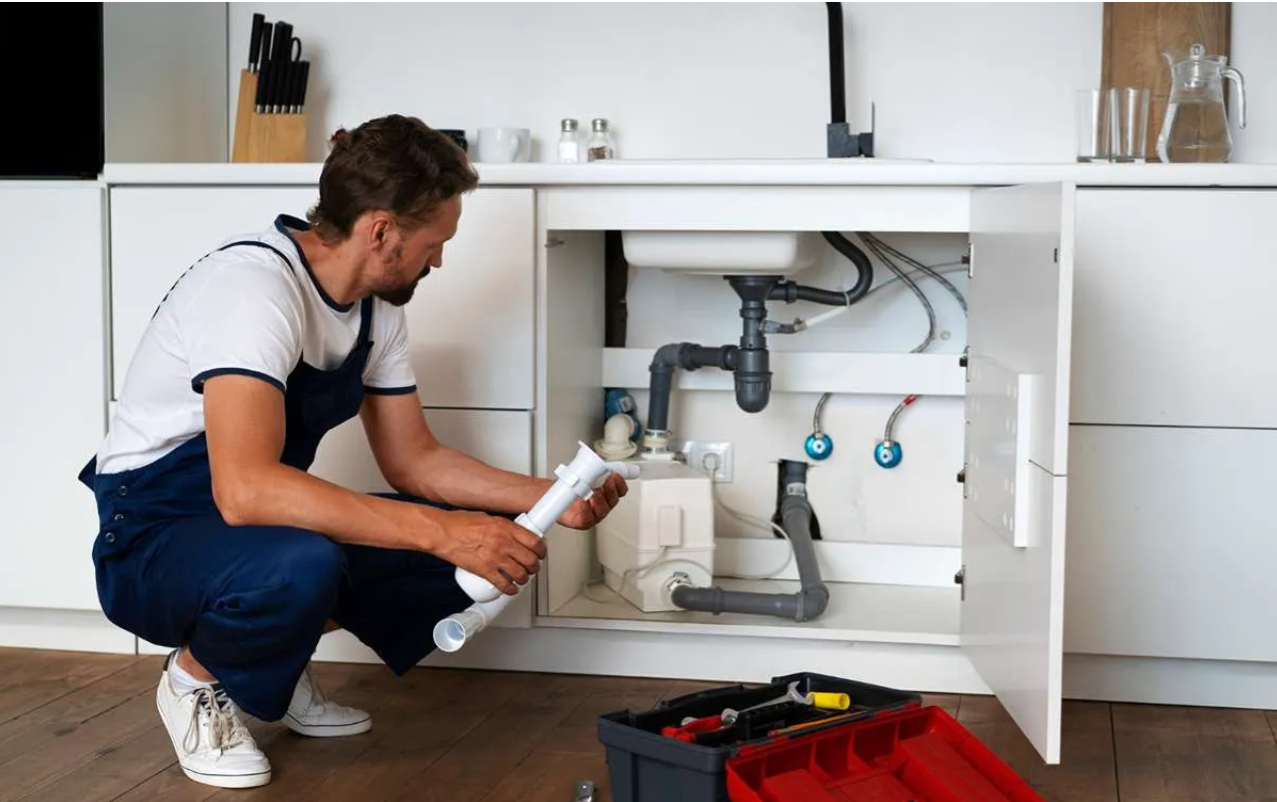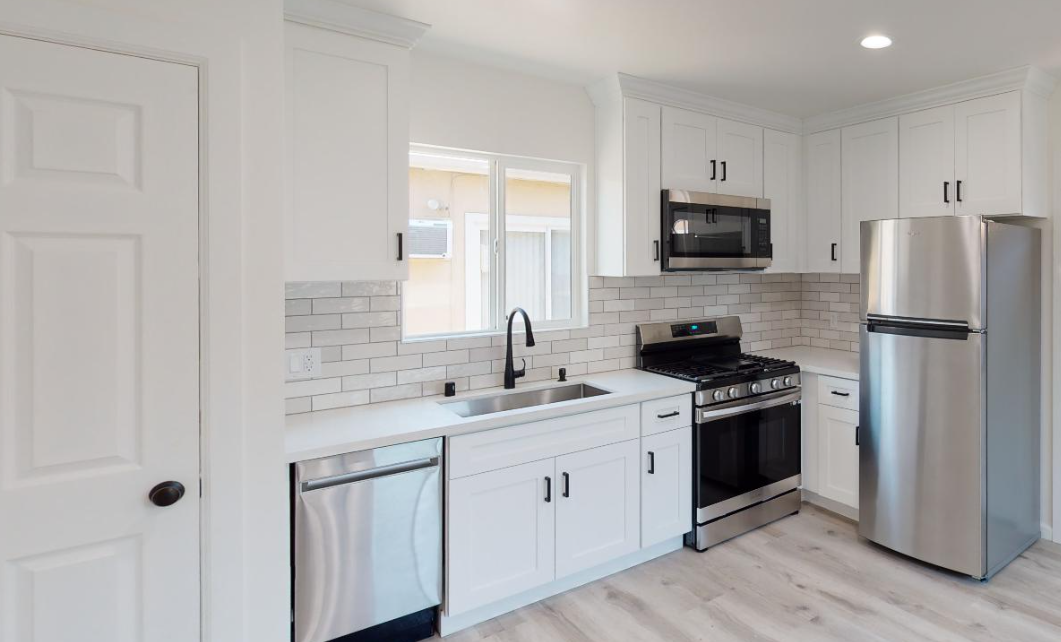October 2, 2025
.png)
Schedule a free appointment with one of our ADU experts.
Get ADU QuoteOr call: (323) 591-3717
Planning an ADU kitchen that meets California’s inspection standards requires including all essential elements, such as a sink, stove, storage, and proper utilities. Additionally, you must follow local rules on spacing, ventilation, and safety. A well-organized layout with accessible plumbing and electrical systems ensures compliance and prevents delays during inspection.
Furthermore, partnering with a skilled ADU designer simplifies the entire process. They understand California’s specific requirements and create kitchens that inspectors approve on the first review. With their guidance, you save time, avoid costly mistakes, and achieve a functional kitchen tailored to both your lifestyle and state standards.
Understanding California’s kitchen requirements for ADUs means including the essentials that make it a complete living space. Your ADU kitchen must have counter space, storage, and a proper layout. Local rules may also add ventilation, outlet placement, and spacing standards. Meeting these basics ensures your kitchen is functional and fully compliant.
Collaborating with a professional ADU designer ensures your kitchen layout is both efficient and code-compliant. They optimize space, recommend durable materials, and plan appliance placement for maximum functionality. This approach streamlines construction, minimizes revisions, and creates a kitchen that is practical, safe, and tailored to your daily needs.

Smart layout strategies are essential for passing ADU kitchen inspections. For instance, grouping plumbing fixtures close together reduces costs and improves efficiency. Additionally, placing the sink, stove, and refrigerator in a functional work triangle ensures smooth movement. Furthermore, keeping clearances around appliances consistent with safety codes prevents inspection issues.
To implement these principles effectively, consider the following practical strategies:
By applying these strategies, your kitchen not only meets inspection requirements but also provides a functional, safe, and comfortable space for daily cooking and entertaining.
Selecting the right appliances and fixtures is essential for ADU kitchen compliance. For example, choose energy-efficient models that meet California standards, such as stoves with safety shut-offs and low-flow faucets. Additionally, compact appliances often work best in small layouts, helping you save space while still meeting inspection requirements for functionality and safety.
Equally important, it is crucial to select durable, code-approved fixtures. Therefore, install sinks with the correct depth and drainage, and ensure ventilation hoods meet exhaust standards. Moreover, lighting and outlets should follow spacing rules for kitchens. By combining efficiency with compliance, you create a kitchen that passes inspections while remaining practical for everyday use.
Plumbing compliance in ADU kitchens requires properly installed water supply and drainage lines. Inspectors look for correct pipe sizing, leak-free connections, and safe placement of shut-off valves. Keeping plumbing close to existing lines also helps reduce construction costs while making it easier to pass inspections.
Electrical and ventilation compliance are equally important. Outlets must be placed at safe intervals across countertops and equipped with GFCI protection. Adequate lighting ensures visibility, while range hoods or exhaust fans remove smoke and moisture. Together, these systems create a safe kitchen that meets code and inspection standards.

Choosing the right materials and finishes significantly increases your ADU kitchen’s chances of passing inspections without issues. For example, inspectors look for safe, durable, and code-compliant surfaces. Specifically, non-combustible backsplashes near stoves, water-resistant flooring, and smooth, easy-to-clean countertops all meet health and safety expectations while keeping your kitchen functional.
Moreover, finishes also influence long-term value and daily use. Therefore, select cabinetry with proper anchoring, non-toxic paints, and moisture-resistant wall finishes. Additionally, use fixtures and hardware rated for residential kitchens to ensure compliance. By thoughtfully balancing style with approved materials, you create a kitchen that passes inspection while remaining attractive and durable for years.
At Gather ADU, we integrate compliance into every kitchen design from the very beginning. Our team carefully reviews California codes and applies them to your floor plan, appliance placement, and utilities. This proactive approach minimizes errors, reduces stress, and ensures inspectors approve your kitchen on the first review.
Additionally, we guide you through every decision, from layout to finishes. Using precise 3D renderings and permit-ready documents, you can visualize your kitchen before construction starts. Our collaborative process streamlines inspections, saves money, and delivers a kitchen that is functional, stylish, and fully aligned with both your lifestyle and state standards.
At Gather ADU, we make sure your kitchen passes inspection the first time by designing with compliance in mind. We integrate California’s codes into every detail, from layout to finishes, so you avoid delays and extra costs. Our team guides you step by step for a smooth approval process.
Planning an ADU kitchen on your own can feel challenging. From strict California codes to plumbing, electrical, and ventilation requirements, one small mistake can lead to costly delays. Many first-time homeowners struggle with meeting inspection standards, which slows down their project and increases expenses.
At Gather ADU, we simplify the process. Our expert team designs kitchens that meet California codes the first time. We guide you through layouts, appliances, and finishes while preparing permit-ready documents you can trust. With us, you save time, avoid stress, and create a kitchen that’s both functional and beautiful.

Yes, California requires ADUs to have a complete kitchen. This includes a sink, cooking appliance, storage, and counter space. Without these elements, your ADU won’t meet inspection standards or qualify as a legal dwelling unit.
Yes, compact appliances like smaller stoves, fridges, or microwaves are allowed as long as they meet safety codes. Many homeowners prefer them because they save space and reduce energy use while still passing California’s inspection requirements.
Ventilation is important for passing inspections and ensuring safety. California requires range hoods or exhaust fans to remove smoke, grease, and moisture. Without proper ventilation, your kitchen may not pass inspection and could face costly corrections later.
Placement depends on plumbing and electrical access. Designers usually position kitchens near existing utility lines to save costs and simplify compliance. Poor placement often leads to higher expenses and inspection challenges, so careful planning is always recommended.
A designer ensures your ADU kitchen meets California codes the first time. They optimize layouts, select compliant appliances, and prepare permit-ready plans. This saves money, avoids delays, and gives you a functional kitchen that inspectors approve quickly.
.png)
Not sure where to start with your ADU project?